

| The sculptures on the west front were all added in recent years, most recently (1998) the ten statues above the door, honoring twentieth century Christian martyrs--the fifth from the left is Martin Luther King. | 
|
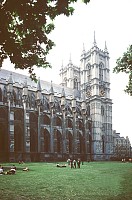
|
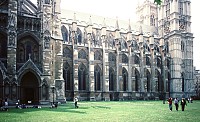
|

|
The nave exteriorBuilt primarily of limestone from Caen France, the church is 530 feet long (including the nave, choir, the Confessor's Chapel, and Lady Chapel or Henry VII's chapel at the far east end); the nave is only about 166 feet of the total. |
The north transept | ||
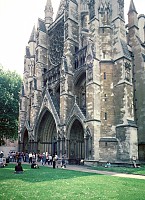
|

|
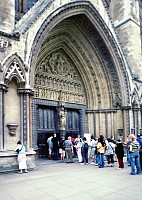
|
Lady Chapel or Henry VII's chapel from the east; views of the roof | ||
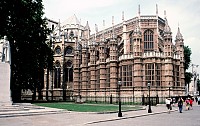
|
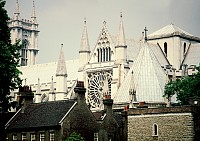
|
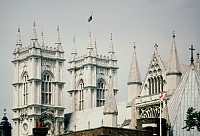
|
Lady Chapel or Henry VII's chapel from the east |
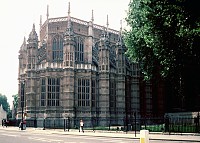
|
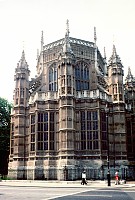
|
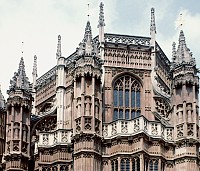
|
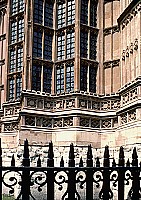
|
|
 Click here to return to index of art historical sites.
Click here to return to index of art historical sites.
 Click here to return to index of artists and architects.
Click here to return to index of artists and architects.
 Click here to return to chronological index.
Click here to return to chronological index.
 Click here to see the home page of Bluffton University.
Click here to see the home page of Bluffton University.
